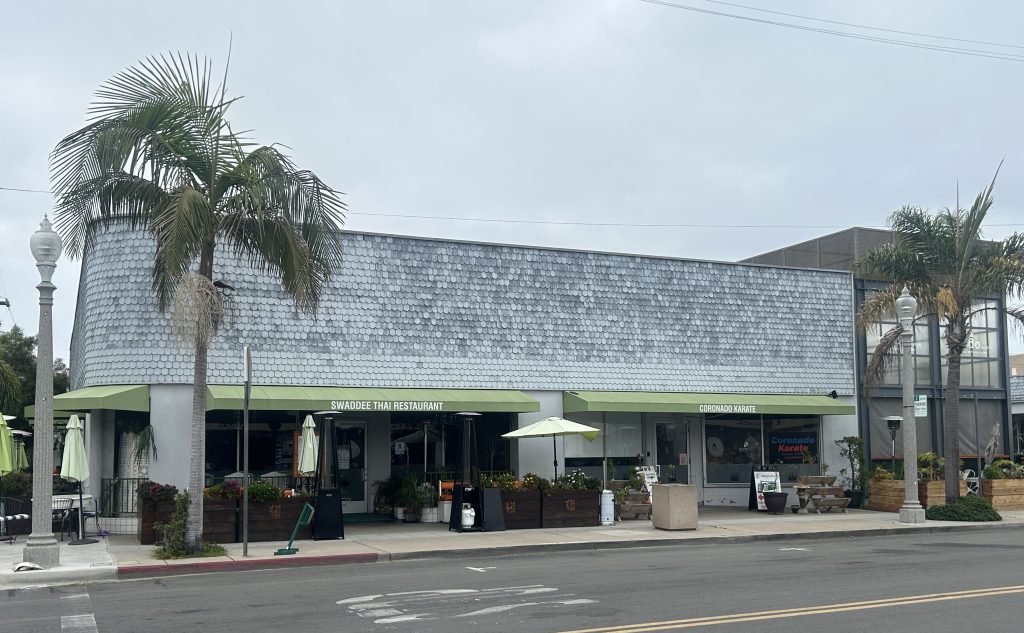
After hours of overwhelmingly negative public comment on the city’s draft housing element plan, the Coronado City Council threw up its hands: We agree, but we have no choice.
“Your voices were not heard during this process, and often times, frankly, were outright ignored,” Coronado Mayor Richard Bailey said. ”And they were not heard because this process has really never been about what works best for Coronado.”
The council approved the plan unanimously but begrudgingly at its Oct. 17 meeting.
The draft plan would rezone for the addition of up to 1049 units of housing in Coronado. All cities in California are required under state law to zone for additional housing as a part of the state’s Regional Housing Needs Allocation (RHNA), an effort to curb the housing crisis.
In each of the five previous RHNA cycles, the city came into compliance swiftly. This one, however, assigned Coronado a 2,000 percent increase in units compared to the one preceding it. In this cycle, Coronado was assigned 912 units, but must actually zone for a 15 percent buffer, pushing the total to 1049.
The city fought its allocation by submitting a draft plan that zoned for just 344 units, which the city said was more reasonable but the state rejected. Coronado also filed a lawsuit against the San Diego Association of Governments, which it lost, and then appealed, but lost again. Earlier this year, the state threatened to take action against the city if it did not comply, which could include losing jurisdiction over its zoning and permitting.
And, the state would still find a way to zone for these units if the city did not. Councilors said that developing a compliant plan retained a modicum of local control.
“We have done everything within our power to support the community and to minimize the impact of this process,” City Council Member Mike Donovan said. “If you think this is bad, the alternative is even worse.”
Chief among citizen complaints during public comment was the draft plan’s inclusion of Site 9, a former public school that was closed due to low enrollment and is currently operating as a childcare and pre-school center. Some questioned whether losing the school site to make way for housing would, in turn, increase school enrollment, prompting the Coronado Unified School District to seek a new school to replace the one it lost.
Another unpopular site, at 105 B Avenue, could generate up to 116 units, potentially at the expense of a Smart and Final Extra! and other retail operations. City staff would work with the owner/developer to maintain the grocery component of the parcel, the draft report says.
The HCD (California Department of Housing and Community Development) requires that its sites sit on parcels that are at least a half-acre, of which Coronado has few. Though some suggested that other lots be combined, since they are privately owned, the city cannot assume that its owners would opt to do so.
However, in a win for Coronado, the proposed housing element includes 374 units of military housing. The city’s housing allocation was determined in part by the number of jobs in Coronado, including U.S. military members who are stationed there.
“The HCD never let us use any military land at all,” Council Member Carrie Downey said, crediting the change to city staff touring HCD staff around Coronado to demonstrate why certain areas — like along the Silver Strand, which is used for military training — could not host more housing.
Opponents of Coronado’s 912-unit allocation said it was unfair that the city’s staggering military presence inflated its required housing. Including military housing that the U.S. Navy has already allocated funding for, lightens the blow, city staff said.
Mayor Bailey blamed SANDAG’s highly contested weighted vote system, which works like the U.S. Electoral College: High-population cities carry more votes. Supporters say it fosters representative government; critics say it renders smaller cities like Coronado voiceless.
Housing allocations are determined first by the state, which assigns a total regional number to SANDAG, who, in turn, allocates units to individual cities. In the past, individual cities were asked how much housing they could accommodate, but this time, SANDAG opted to use a formula to determine allocations, Bailey said.
Although most of the SANDAG board supported a formula that would not penalize cities with large military bases, a weighted vote overturned that consensus, shouldering Coronado with a disproportionate amount of the housing allocation, Bailey said.
“At this point, we don’t have much choice,” Downey said ahead of the vote.
After the council’s approval, the city will submit its draft plan to the HCD for review. If approved – and staff said they worked with the state to develop the plan – the city will then begin its next steps in the complicated matter of rezoning.
Read an overview of the draft plan here, or view the plan in full here.




